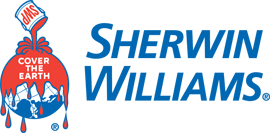Alkyd paints are "usually" not recommended for application direct to aluminum because of possible saponification (a reaction between the fatty acids in the alkyd and the aluminum salts when moisture is present). Since most aerosol spray enamels are alkyd based, you have the potential for problems when you apply them to aluminum. An epoxy ester or acrylic aerosol spray would be a better choice for painting small pieces of clean aluminum.
A two-component polyurethane coating will produce a hard, durable finish as well as provide effective color and gloss retention in areas that must withstand a lot of physical abuse. Over properly prepared and primed substrates, two-component polyurethanes provide a tough, long-lasting finish.
It depends on the coating, you will need to open the container and observe the coating. After gradually bringing frozen paint up to room temperature (70 degrees F), open the can and stir it. If the paint looks like a fresh, never-been-frozen can of the same product, it should be safe to use. When inspecting a thawed can of paint, be especially wary of lumps, thickening or solid pieces that can't be broken. If any are present, the paint should not be used. In general, it's best to prevent such problems by protecting paint - especially water-based latex paints - from freezing temperatures.
For a conventional system, use Wood Classics Stain Pickled White and one of the Wood Classics topcoats. A non-yellowing system would be a first coat of 10 parts White Vinyl Sealer (P63W2) mixed with 2 parts Vinyl Sealer (T67F3). Topcoat with one or two coats of Sher-Wood CAB Acrylic Lacquer. This system is designed for spray application. All of these products are available at your Sherwin-Williams Store.
Your best option is to upgrade from a traditional latex or alkyd system to a water-based catalyzed epoxy. It will offer many of the same characteristics as a solvent-based epoxy, such as a abrasion resistance, hardness, chemical resistance and scrubability, without the strong and lingering odor. This is why water-based epoxies are often used in schools, nursing homes, hospitals, kitchens and food plants. Water-based epoxies are also highly compatible with other previous coatings, which eliminates the lifting problem you could encounter with a solvent-based epoxy.
Of the three main paint ingredients - pigments, solvents and binders - the pigment provides hiding power and gives paint its color and shading. The solvents carry the paint to the surface, then evaporate, leaving behind a film of paint; the binders are bonding agents that hold the paint together.
Simply divide the grams per liter amount by 120 to determine the pounds per gallon figure. For instance, a product that has a VOC of 250 grams per liter would have 2.08 pounds per gallon, because 250/120 = 2.08. To convert from pounds per gallon to grams per liter, multiply the number of pounds by 120.
It depends on what kind of finish you want. A clear heavy-duty, high-performance polyurethane will provide a durable, dust-free clear finish if the concrete has a uniform appearance. If the concrete's finish is not uniform, or if you want a colored finish on the floor, a two-part polyamide epoxy works best. Do not use latex or oil-based floor paint in a garage because they can lift when they come in contact with car or truck tires. For best results, allow the coating to cure at least 10 days before driving a vehicle on it.
In many cases, the application of a high-solids universal primer or barrier coat will allow the application of a strong solvent-based epoxy or urethane over a previous coating. Using a barrier coat reduces the likelihood of the solvents in the topcoat lifting previous finishes and eliminates the need for costly and time-consuming removal of all existing paint.
After allowing the galvanized surface to weather for six months or chemically cleaning it to remove any oil or remnants of the galvanizing process, you can apply two coats of an acrylic latex paint directly to the metal or a special galvanized metal primer topcoated with an alkyd or latex product. Do not apply an alkyd directly to a galvanized metal surface because the oils will react with the zinc used in the galvanizing process, causing the alkyd to peel.











